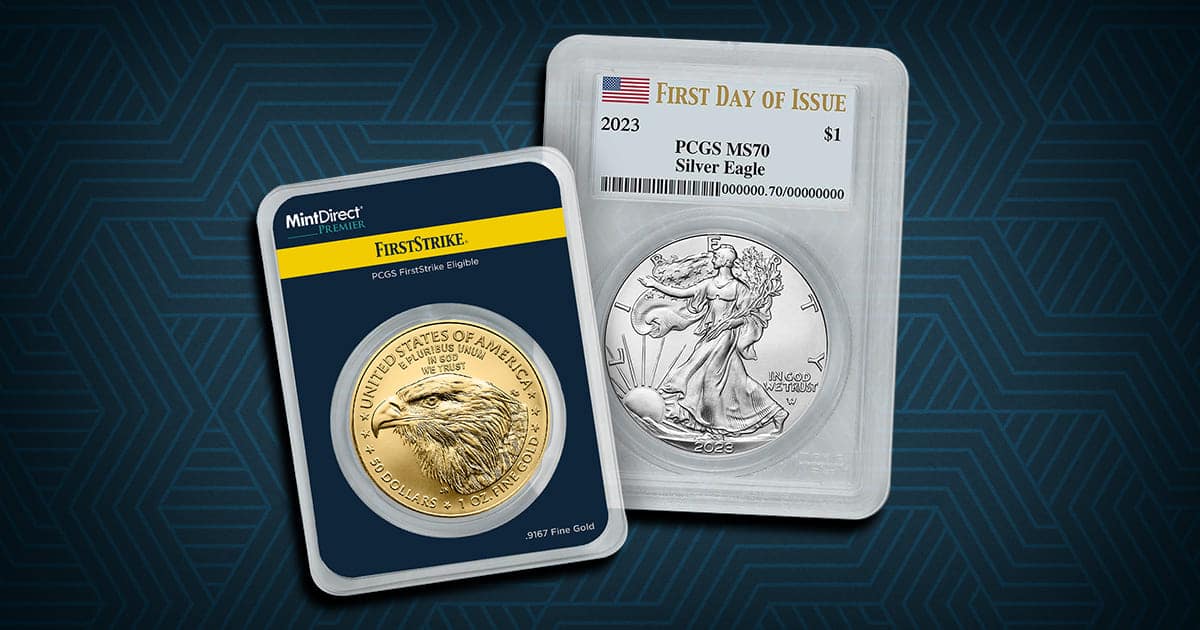
Do FDI and First Strike Mean the Same Thing?
What do these terms mean? Are they the same thing? Let’s dive in and clarify these muddy waters.
Yes, there is a difference between First Day of Issue coins and First Strike coins.
What Does First Strike Mean?
First Strike is a PCGS designation that refers to the coins struck in the first 30 days of a coin’s issue. These are coins struck from a fresh, new die, which are said to have greater quality strikes because of the die’s relative age.
Are First Strike Coins More Valuable Than Business Issue or Circulation Issue Coins?
The First Strike designation makes coins more valuable and adds both excitement and prestige to coin collecting with multiple releases annually.
If you’re on the fence, First Strike coins come with the confidence that they’ve been certified by PCGS, graded for luster and condition, and sealed in a PCGS holder.
What Does the First Day of Issue Mean?
First Day of Issue is an NGC designation that indicates a coin was purchased on the first day of its issue. In most cases, the NGC First Day of Issue designation is only available to bulk submissions and select trade shows.
To qualify for this designation, coins must be purchased within one day of the first day a mint makes coins available for purchase. NGC or an NGC-approved depository must receive the coin within one week of the date of release.
NGC also requires the submitter to provide evidence, including purchase receipts, to verify the date the coins were bought.
Are FDI Coins More Valuable Than Others?
Like First Strike coins, First Day of Issue coins command a higher premium than their circulation strike counterparts. This is because the coins have been certified to have been purchased within the first 30 days of availability and are among the first struck on a new die.
The FDI designation adds value and context to coin collections and enables collectors to own scarce subsets of coin releases.
See the difference for yourself today and find the perfect piece for your collection.




